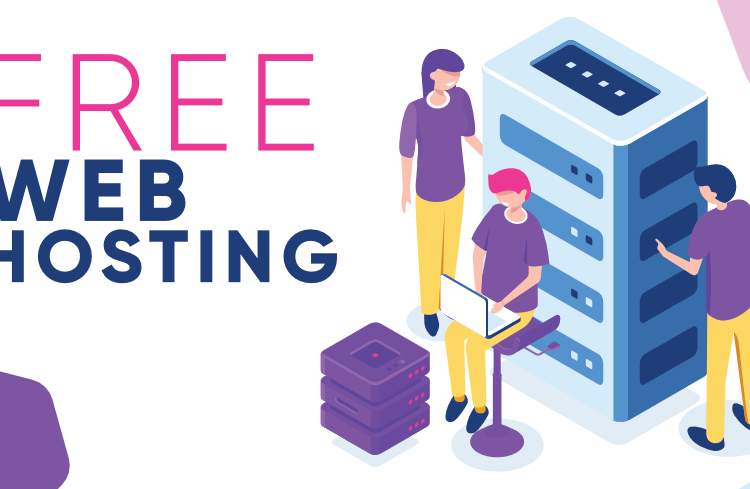Artificial Intelligence: Shaping Our Present and Defining Our Future
Artificial Intelligence (AI) has transitioned from the realm of science fiction to become a transformative force reshaping industries, societies, and our daily lives. From the algorithms that power our smartphones to sophisticated systems used in healthcare and finance, AI is rapidly evolving and its impact is only set to grow. This comprehensive article will delve into the multifaceted world of artificial intelligence, exploring its definition, historical journey, core concepts, diverse applications, future potential, and the essential considerations surrounding its development and implementation.
Toc
- 1. 1. Introduction to Artificial Intelligence
- 2. 2. The Core Concepts and Types of AI
- 3. Related articles 01:
- 4. 3. Applications of Artificial Intelligence Across Industries
- 4.1. 3.1. Healthcare: Revolutionizing Diagnosis, Treatment, and Drug Discovery
- 4.2. 3.2. Finance: Enhancing Fraud Detection, Algorithmic Trading, and Customer Service
- 4.3. 3.3. Manufacturing: Driving Automation, Predictive Maintenance, and Quality Control
- 4.4. 3.4. Transportation: The Rise of Autonomous Vehicles and Intelligent Traffic Management
- 4.5. 3.5. Retail and E-commerce: Personalization, Recommendation Systems, and Customer Engagement
- 4.6. 3.6. Education: Personalized Learning and Intelligent Tutoring Systems
- 4.7. 3.7. Entertainment: Content Generation, Personalized Recommendations, and Gaming
- 5. 4. The Future of Artificial Intelligence: Potential and Challenges
- 6. Related articles 02:
- 7. 5. Getting Started with AI: Learning and Resources
- 7.1. 5.1. Educational Pathways: Online Courses, University Programs, and Workshops
- 7.2. 5.2. Essential Skills for Aspiring AI Professionals
- 7.3. 5.3. Popular Programming Languages and Tools for AI Development
- 7.4. 5.4. Staying Updated with the Latest AI Research and Trends
- 7.5. 5.5. Communities and Resources for AI Enthusiasts and Practitioners

1. Introduction to Artificial Intelligence
The term “Artificial Intelligence” often conjures images of sentient robots and futuristic scenarios. While these depictions capture a certain aspect of AI’s potential, the reality is far more nuanced and already deeply integrated into our world.
1.1. Defining Artificial Intelligence: Mimicking Human Cognition
At its most fundamental, Artificial Intelligence can be defined as the ability of a computer or a machine to mimic human cognitive functions such as learning, problem-solving, decision-making, and perception. Unlike traditional computer programs that follow pre-defined rules, AI systems are designed to learn from data, identify patterns, and make decisions or predictions based on that learning. The ultimate goal of many AI researchers is to create systems that can perform tasks that typically require human intelligence.
1.2. A Brief History of AI: From Theory to Reality
The concept of artificial intelligence dates back centuries, with early philosophical inquiries into the nature of thought and the possibility of creating artificial beings. However, the formal field of AI research emerged in the mid-20th century, fueled by advancements in computer science and a growing optimism about the potential of machines. Key milestones in the history of AI include:
- The Dartmouth Workshop (1956): Often considered the birth of AI as a field, this workshop brought together leading researchers who believed that every aspect of learning or any other feature of intelligence can in principle be so precisely described that a machine can be made to simulate it.
- The Rise of Expert Systems (1970s-1980s): These early AI systems were designed to mimic the decision-making abilities of human experts in specific domains.
- The AI Winter (Late 1980s-Early 1990s): A period of reduced funding and enthusiasm for AI research due to the limitations of existing technologies and unmet expectations.
- The Resurgence of AI (Late 2000s-Present): Driven by advancements in computing power, the availability of large datasets, and breakthroughs in machine learning, particularly deep learning, AI has experienced a significant resurgence in recent years.
1.3. The Growing Importance and Impact of AI in the 21st Century
In the 21st century, AI has moved beyond research labs and into the mainstream, becoming an increasingly integral part of our lives and the global economy. Its importance stems from its ability to:
- Automate tasks: AI can automate repetitive and time-consuming tasks, freeing up human workers for more creative and strategic endeavors.
- Analyze vast amounts of data: AI algorithms can process and analyze massive datasets far more efficiently than humans, uncovering valuable insights and patterns.
- Improve decision-making: By leveraging data and sophisticated algorithms, AI can assist in making more informed and accurate decisions across various domains.
- Personalize experiences: AI powers recommendation systems, personalized content delivery, and tailored customer service, enhancing user experiences.
- Solve complex problems: AI is being used to tackle some of the world’s most challenging problems, from disease diagnosis to climate change modeling.
1.4. Key Milestones and Breakthroughs in AI Development
The recent resurgence of AI has been marked by several significant milestones and breakthroughs, including:
- Advancements in Deep Learning: Deep learning, a subfield of machine learning that utilizes artificial neural networks with multiple layers, has achieved remarkable success in areas such as image recognition, natural language processing, and speech recognition.
- The Rise of Powerful AI Models: Models like GPT-3 and its successors have demonstrated unprecedented capabilities in generating human-like text, translating languages, and even writing code.
- Autonomous Vehicles: The development of self-driving cars has made significant progress, promising to revolutionize transportation.
- AI in Healthcare: AI is being used to improve medical diagnosis, personalize treatment plans, and accelerate drug discovery.
- AI in Gaming: AI has reached new levels of sophistication in games, with programs like AlphaGo defeating world champions in complex strategy games.
These milestones highlight the rapid pace of innovation in the field of artificial intelligence.
2. The Core Concepts and Types of AI
The field of AI encompasses a wide range of concepts and techniques. Understanding some of the core principles and different types of AI is essential for appreciating its capabilities and limitations.

2.1. Machine Learning: Enabling Systems to Learn from Data
Machine learning (ML) is a fundamental concept within AI. It involves the development of algorithms that allow computer systems to learn from data without being explicitly programmed. Instead of relying on hard-coded rules, ML algorithms identify patterns and relationships in data and use these patterns to make predictions or decisions. Common machine learning techniques include:
- Supervised Learning: The algorithm learns from labeled data, where the input data is paired with the correct output. Examples include image classification and spam detection.
- Unsupervised Learning: The algorithm learns from unlabeled data, trying to find hidden structures or patterns. Examples include clustering and anomaly detection.
- Reinforcement Learning: The algorithm learns through trial and error by interacting with an environment and receiving rewards or penalties for its actions. This is often used in robotics and game playing.
2.2. Deep Learning: Neural Networks and Complex Pattern Recognition
Deep learning is a subfield of machine learning that has been particularly successful in recent years. It utilizes artificial neural networks with multiple layers (hence “deep”) to learn complex patterns from large amounts of data. These neural networks are inspired by the structure and function of the human brain. Deep learning has achieved remarkable results in tasks such as image and speech recognition, natural language processing, and generating creative content.
2.3. Natural Language Processing (NLP): Understanding and Generating Human Language
Natural Language Processing (NLP) is a branch of AI that focuses on enabling computers to understand, interpret, and generate human language. NLP techniques are used in a wide range of applications, including:
2. https://ngungtaonghiep.com/mmoga-top-5-cloud-storage-providers-in-us-a-comprehensive-review-1
3. https://ngungtaonghiep.com/mmoga-elevate-your-websites-with-free-web-hosting-services-1
- Machine Translation: Translating text from one language to another.
- Sentiment Analysis: Determining the emotional tone of text.
- Chatbots and Virtual Assistants: Interacting with humans through natural language.
- Speech Recognition: Converting spoken language into text.
- Text Summarization: Automatically generating concise summaries of long documents.
2.4. Computer Vision: Enabling Machines to “See” and Interpret Images
Computer vision is another field within AI that aims to enable computers to “see” and interpret visual information from the world, similar to how humans do. Computer vision techniques are used in applications such as:
- Image Recognition: Identifying objects, people, and scenes in images.
- Object Detection: Locating and identifying specific objects within an image.
- Image Segmentation: Dividing an image into meaningful regions.
- Facial Recognition: Identifying individuals based on their facial features.
- Autonomous Driving: Enabling vehicles to perceive their surroundings.
2.5. Robotics and AI Integration
Robotics is a field that deals with the design, construction, operation, and application of robots. The integration of AI with robotics has led to the development of intelligent robots that can perform complex tasks autonomously, adapt to changing environments, and even collaborate with humans. These AI-powered robots are being used in various industries, including manufacturing, healthcare, logistics, and exploration.
3. Applications of Artificial Intelligence Across Industries
The versatility and power of AI have led to its adoption across a wide range of industries, revolutionizing processes and creating new possibilities.
3.1. Healthcare: Revolutionizing Diagnosis, Treatment, and Drug Discovery
AI is transforming healthcare in numerous ways, including:
- Improved Diagnostics: AI algorithms can analyze medical images (like X-rays and MRIs) to detect diseases earlier and more accurately.
- Personalized Treatment Plans: AI can help doctors tailor treatment plans to individual patients based on their genetic makeup, medical history, and lifestyle.
- Drug Discovery and Development: AI can accelerate the process of identifying potential drug candidates and predicting their effectiveness.
- Robotic Surgery: AI-powered robots can assist surgeons in performing complex procedures with greater precision.
- Virtual Health Assistants: AI-powered chatbots can provide patients with information, schedule appointments, and monitor their health remotely.
3.2. Finance: Enhancing Fraud Detection, Algorithmic Trading, and Customer Service
The financial industry is leveraging AI for various applications, such as:
- Fraud Detection: AI algorithms can analyze financial transactions in real-time to identify and prevent fraudulent activities.
- Algorithmic Trading: AI-powered trading systems can make investment decisions based on complex market data.
- Risk Assessment: AI can help financial institutions assess credit risk and make more informed lending decisions.
- Customer Service: AI-powered chatbots can provide instant support and answer customer queries.
- Personalized Financial Advice: AI algorithms can analyze a customer’s financial situation and provide tailored recommendations.
3.3. Manufacturing: Driving Automation, Predictive Maintenance, and Quality Control
AI is playing a crucial role in modern manufacturing, enabling:
- Automation: AI-powered robots can perform repetitive and dangerous tasks on the assembly line.
- Predictive Maintenance: AI algorithms can analyze sensor data from machinery to predict when maintenance is needed, reducing downtime and costs.
- Quality Control: AI-powered vision systems can inspect products for defects with greater accuracy and speed than human inspectors.
- Supply Chain Optimization: AI can analyze data to optimize logistics, predict demand, and improve efficiency in the supply chain.
3.4. Transportation: The Rise of Autonomous Vehicles and Intelligent Traffic Management
AI is poised to revolutionize transportation with the development of:
- Autonomous Vehicles: Self-driving cars, trucks, and buses promise to improve safety, efficiency, and accessibility in transportation.
- Intelligent Traffic Management Systems: AI can analyze traffic patterns and adjust traffic signals in real-time to optimize traffic flow and reduce congestion.
- Drone Technology: AI-powered drones are being used for delivery services, surveillance, and infrastructure inspection.
3.5. Retail and E-commerce: Personalization, Recommendation Systems, and Customer Engagement
AI is transforming the retail and e-commerce industries by enabling:
- Personalized Recommendations: AI algorithms analyze customer data to provide tailored product recommendations.
- Chatbots for Customer Service: AI-powered chatbots can handle customer inquiries, provide product information, and assist with purchases.
- Dynamic Pricing: AI can analyze market conditions and customer behavior to optimize pricing strategies.
- Inventory Management: AI can predict demand and optimize inventory levels to reduce waste and improve efficiency.
3.6. Education: Personalized Learning and Intelligent Tutoring Systems
AI has the potential to personalize and enhance the learning experience through:
- Personalized Learning Platforms: AI can adapt the curriculum and pace of learning to meet the individual needs of each student.
- Intelligent Tutoring Systems: AI-powered tutors can provide students with personalized feedback and guidance.
- Automated Grading: AI algorithms can automate the grading of certain types of assignments, freeing up teachers’ time.
3.7. Entertainment: Content Generation, Personalized Recommendations, and Gaming
AI is also making its mark in the entertainment industry through:
- Content Generation: AI algorithms can generate music, art, and even written content.
- Personalized Recommendations: Streaming services and other entertainment platforms use AI to recommend content that users are likely to enjoy.
- Enhanced Gaming Experiences: AI powers more intelligent and engaging non-player characters (NPCs) in video games.
4. The Future of Artificial Intelligence: Potential and Challenges
The future of AI holds immense potential for transformative advancements across various fields, but it also presents significant challenges that need to be addressed responsibly.

4.1. The Potential for Transformative Advancements in Various Fields
As AI continues to evolve, we can expect to see even more groundbreaking applications in areas such as:
- Scientific Discovery: AI can accelerate scientific research by analyzing complex data and identifying new patterns and relationships.
- Environmental Sustainability: AI can be used to model climate change, optimize energy consumption, and develop more sustainable solutions.
- Space Exploration: AI-powered robots can assist in exploring and understanding the universe.
- Accessibility: AI can create new tools and technologies to improve the lives of people with disabilities.
The possibilities seem limitless, and AI has the potential to address some of humanity’s most pressing challenges.
4.2. Ethical Considerations: Bias, Fairness, and Accountability in AI
As AI systems become more powerful and integrated into our lives, it’s crucial to address the ethical considerations they raise. These include:
- Bias in AI: AI algorithms learn from data, and if that data reflects existing societal biases, the AI system can perpetuate or even amplify those biases.
- Fairness and Equity: Ensuring that AI systems are fair and do not discriminate against certain groups of people is essential.
- Accountability and Transparency: It’s important to understand how AI systems make decisions and to establish accountability when things go wrong.
Addressing these ethical challenges is crucial for building trust in AI and ensuring its responsible deployment.
4.3. The Impact of AI on the Job Market and the Future of Work
The increasing automation capabilities of AI are raising concerns about its potential impact on the job market. While AI is likely to automate many existing jobs, it will also create new ones. The future of work will likely involve humans and AI collaborating in new ways, and it’s important to prepare for these changes through education and reskilling initiatives.
4.4. Ensuring the Responsible Development and Deployment of AI
To harness the benefits of AI while mitigating its risks, it’s essential to focus on responsible development and deployment. This involves:
- Establishing ethical guidelines and regulations: Governments and industry organizations need to develop frameworks for the ethical use of AI.
- Promoting transparency and explainability: Efforts should be made to make AI systems more transparent and understandable.
- Investing in research on AI safety and control: Ensuring that AI systems are safe and aligned with human values is crucial.
- Fostering public dialogue and education: Raising awareness and promoting informed discussions about the implications of AI are essential.
4.5. The Long-Term Vision: Artificial General Intelligence (AGI) and Beyond
The current state of AI is often referred to as “narrow AI,” meaning that AI systems are designed to perform specific tasks. The long-term vision of some AI researchers is to achieve Artificial General Intelligence (AGI), which would be an AI system with human-level cognitive abilities, capable of performing any intellectual task that a human being can. Beyond AGI, there are even more speculative concepts like Artificial Superintelligence (ASI), which would surpass human intelligence. While these concepts are still largely theoretical, they represent the ultimate aspirations and potential of AI research.
5. Getting Started with AI: Learning and Resources
For those interested in delving deeper into the world of AI, there are numerous resources available to facilitate learning and skill development.
5.1. Educational Pathways: Online Courses, University Programs, and Workshops
Numerous online platforms offer courses on various aspects of AI, from introductory concepts to advanced machine learning techniques. Universities around the world are also offering undergraduate and graduate programs in AI and related fields. Additionally, workshops and bootcamps provide intensive, hands-on training in specific AI skills.
5.2. Essential Skills for Aspiring AI Professionals
Developing a career in AI typically requires a strong foundation in areas such as mathematics (especially linear algebra and calculus), statistics, computer science (including programming and data structures), and problem-solving. Domain-specific knowledge in areas like healthcare, finance, or engineering can also be highly valuable.
5.3. Popular Programming Languages and Tools for AI Development
Several programming languages are widely used in AI development, with Python being particularly popular due to its extensive libraries and frameworks for machine learning and deep learning (such as TensorFlow, PyTorch, and scikit-learn). Other languages like R and Java are also used in specific AI applications.
5.4. Staying Updated with the Latest AI Research and Trends
The field of AI is rapidly evolving, so it’s important to stay updated with the latest research and trends. This can be done by following leading AI research labs and publications, attending conferences and workshops, and participating in online communities and forums.
5.5. Communities and Resources for AI Enthusiasts and Practitioners
Numerous online communities, forums, and social media groups are dedicated to AI. These platforms provide opportunities to connect with other enthusiasts, ask questions, share knowledge, and collaborate on projects. Resources like research papers, open-source code repositories (like GitHub), and industry blogs are also valuable for staying informed and advancing your AI skills.
Artificial intelligence is no longer a futuristic fantasy but a powerful and rapidly evolving technology that is already transforming our world in profound ways. By understanding its fundamentals, exploring its diverse applications, and engaging with the ethical and societal implications, we can better navigate the opportunities and challenges that AI presents and shape a future where this technology benefits all of humanity. The journey of AI is just beginning, and its potential to redefine our lives and our world is immense.















